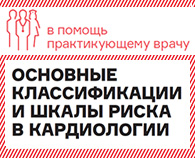Non–infarct-related artery disease common in patients with STEMI
Results from a retrospective pooled analysis of eight clinical trials suggest that obstructive non–infarct-related artery disease is common in patients who present with STEMI, and it may increase the risk for 30-day mortality.
Researchers evaluated data on 68,765 patients extracted from eight independent, international, randomized clinical trials of STEMI published from 1993 to 2007. They examined demographics, clinical risk factors, comorbidities, cardiac manifestations, hemodynamic status and left ventricular function, angiographic information regarding infarct-related artery disease and non–infarct-related artery disease for each vessel territory, in-hospital medications and mortality data. Angiographic data were available for 28,282 patients.
The researchers performed external validation to assess the applicability of the trial results to real-world settings using observational data on patients with STEMI from the Korea Acute Myocardial Infarction Registry and the Duke Cardiovascular Databank.
The primary outcome was all-cause mortality within 30 days after STEMI.
Obstructive non–infarct-related artery disease was found in 52.8% of patients (n=14,929). Of those, 29.6% involved a single vessel and 18.8% involved two vessels, according to the results.
The researchers reported no difference in the degree or distribution of non–infarct-related artery disease based on the infarct-related artery territory.
In unadjusted and adjusted analyses, patients with non–infarct-related artery disease had significantly higher rates of 30-day mortality compared with patients without non–infarct-related artery disease (unadjusted: 4.3% vs. 1.7%; P<.001; adjusted: 3.3% vs. 1.9%; P<.001).
Results of the external validation assessment indicated that the overall prevalence and relationship between non–infarct-related artery disease and 30-day mortality was consistent with findings from the Korea Acute Myocardial Infarction Registry (P<.001). However, the same trend was not observed with findings from the Duke Cardiovascular Databank (P=.65).
“These findings require confirmation in prospectively designed studies, but raise questions about the appropriateness and timing of non–infarct-related artery revascularization in patients with STEMI,” Duk-Woo Park, MD, from the division of cardiology, Asan Medical Center, University of Ulsan College of Medicine in Seoul, Korea, and colleagues concluded.
Disclosure: See the full study for a list of the researchers’ relevant financial disclosures.
Source: www.healio.com






